Limerick
Limerick (Luimneach en irlandés) es un condado en la provincia de Munster, al oeste de Irlanda. Limita con el Condado de Clare por el norte, con el Condado de Cork por el sur y con el Condado de Kerry por el oeste. El Río Shannon atraviesa la ciudad de Limerick y desemboca en el Océano Atlántico. Below the city, the waterway is known as the Shannon Estuary. Because the estuary is shallow, the county's most important port is several kilometres west of Limerick city, at Foynes.
Capital Limerick Otra ciudad importante del condado es Newcastle West que es la segunda luego de la capital. Other towns mainly lie along the Limerick – Tralee roads (N21) and Limerick – Cork road (N20).
History-History of Limerick
Geography
County Limerick is the green heartland of Munster and one possible explanation of its Irish name Luimneach (the flat area) certainly makes sense when compared with the rest of the province. Especially in the east, the land consist mostly of a fertile limestone plain, which is ringed by mountains on its borders; The Slieve Felims, The Galtees (Na Gaibhlte) and the Ballyhoura Mountains. The highest point in County Limerick is Galtymore (919m), on the border with County Tipperary in the far south-east corner of the county. However it would be wrong to say that the county is a monotonous plain, for the county is dotted with hills and ridges. This eastern part of the county is the heartland of the Golden Vale, the rich, verdant fields famous for their dairy produce. Towards the west, the aptly named Mullaghareirk Mountains ("Mullach na Radhairc" in Irish, roughly meaning mountains of the view) push across the county offering dramatic views east over the county and west into County Kerry.
Volcanic rock is to be found in numerous areas in the county, at Carrigogunnell, at Knockfierna, and principally at Pallasgreen/Kilteely in the east, which has been described as the most compact and for its size one of the most varied and complete carboniferous volcanic districts in either Britain and Ireland.
County Limerick is drained principally by the Rivers Mulkear, Loobagh, Maigue, Deel and the Feale, which are all, ultimately, tributaries of the River Shannon. The Shannon Estuary forms the northern boundary of the county, giving Limerick a navigable outlet to the sea, the principal ports being Limerick and Foynes
See also : Geography of Ireland
Transportation--------------
Rail
Limerick has three operational railway lines passing through it,-the Ballybrophy line leading to North Tipperary through Nenagh and Roscrea
-the Ennis line through County Clare (only that station is currently operation)
-the Limerick Junction line which is the busiest line, connecting Limerick to the Cork-Dublin line.
In addition, a line exists to Foynes but the last revenue service was in 2000.
Bus
The county's regional/national bus hub is located beside Limerick City train station.
Air
No commercial airports are situated in County Limerick and the region's needs are serviced from Shannon Airport in County Clare, although some in the south of the county may also use Kerry Airport and Cork Airport is also within 1 hour's drive.
Tourist attractions in County Limerick
Adare - Adare Manor - Castle Oliver - Clare Glens - Curraghchase Forest Park
Foynes - Glin-Estuary Drive - Glenstal Abbey - King John's Castle - Lough Gur
See Limerick for tourist attractions in Limerick city.
Towns and villages
Abbeyfeale - Adare - Annacotty - Ardpatrick - Askeaton - Athea - Athlacca - Ballingarry
Ballylanders - Broadford -Bruff - Cappamore - Castleconnell - Castlemahon - Castletown - Clarina - Crecora - Croagh - Croom - Dromcolliher - Doon - Feenagh - Feohanagh - Foynes - Galbally - Garryspillane - Herbertstown - Hospital - Kilbehenny
Kilfinane - Kilmallock - Kilteely-Dromkeen - Knockaderry - Limerick - Mountcollins -Murroe - Newcastle West - Oola - Pallasgreen - Pallaskenry - Patrickswell - Raheen
Rathkeale - Shanagolden - Templeglantine - Tournafulla
See also
Teskey
List of abbeys and priories in the Republic of Ireland (County Limerick)
External links
Limerick's Official Tourist Website
Limerick County Council
Map of Limerick
Limerick GAA Website
Worthies of Thomond by Robert Herbert- biographical profiles of notable Limerick & Clare people
Ferrar's History of Limerick
THE SÉAMUS Ó CEALLAIGH COLLECTION - Limerick sports history and Gaelic Games
Geografía
La ciudad se encuentra a orillas del río Shannon, que se puede cruzar en tres puntos cercanos al centro de la ciudad. Aunque la población de la ciudad es de 54.023 habitantes (2002), contando su área metropolitana alcanzaría los 86.998 (2002). Su área es de 20,79 km²
Sus visitantes se mantienen siempre ocupados visitando King John´s Castle, St. Mary´s Cathedral, Hunt Museum, haciendo visitas a pié por la ciudad y paseos en barca a lo largo del Shannon.
Economy - Transport - Architecture - Education -
Historia de Limerick
La ciudad data desde al menos la colonización de los vikingos en el año 812; aunque algunos estudios sugieren la presencia de poblaciones anteriores en la zona. Los normandos rediseñaron la ciudad en el siglo XII y añadieron parte de los edificios más notables de la población, como por ejemplo, el Castillo del Rey Juan (St. John's Castle en inglés) o la Catedral de Santa María. Durante las guerras civiles del siglo XVII, la ciudad desempeñó un papel crucial, siendo sitiada por Oliver Cromwell en 1651 y dos veces por los Guillermistas en los años 1690. Al final del segundo de estos sitios se firmó el Tratado de Limerick (1691).
Limerick se enriqueció del mercado a finales del siglo XVIII, pero el Acta de Unión en 1800 y la hambruna causó una depresión económica de la que el país solo logró superar en los tiempos del Tigre Celta en los años 1990. La línea ferroviaria a Waterford unió a la ciudad a la principal entre Cork y Dublín en 1848 y a Waterford en 1853. La apertura de cierto número de líneas secundarias, convirtió a la ciudad en un centro de comunicaciones a nivel regional.
Arte
La ciudad ha servido como escenario al libro de Frank McCourt: Las cenizas de Ángela y para la película del mismo nombre.
Turismo
La ciudad de Limerick es una de los destinos turísticos favoritos dentro de la isla. La ciudad está a sólo 15 minutos en coche del Aeropuerto del Shannon. Actualmente el turismo se está incrementando a un ritmo espectacular tal que en 2006 se abrieron 5 nuevos hoteles proporcionando 1.000 camas más para los turistas.
Las mayores atracciones turísticas de la ciudad incluyen el Castillo del Rey Juan (1212), La Catedral de St. Mary (1168), la Piedra del Tratado (Treaty Stone) o el Museo Hunt. Existen además distintos itinerarios turísticos por diversas partes de la ciudad, así como visitando los principales lugares citados en las obras de Frank McCourt. El pueblo de Adare se encuentra en los alrededores de la ciudad y es una atracción turística bastante popular por sus construcciones tradicionales.
Media articles often refer to Limerick as "Stab City", a term which originated in the press in the 1980s, but this is not supported by the facts or by official statistics. Specifically, in the last year Dublin has had 10 fatal stabbings (Limerick had 1, Cork had 2 in the same period). Knife crime is actually now perceived as a major problem throughout the entire country.
A March 11th 2008 article in The Irish Times suggested that violent crime rates in Limerick are higher than elsewhere in the country.
Recent years have seen serious crimes in Limerick being linked with feuds between criminal gangs within certain areas of the city, mainly Moyross, Southill and St. Mary's Park. Arguably, this rivalry was precipitated by the murder of alleged gang member Eddie Ryan in November 2000, in a public house in the Johnsgate area of the city.
Despite a relative lull in gang violence between 2004 and the first half of 2006 in Limerick's housing estates, the problem seems to have escalated again in September 2006, with two children suffering extensive burns in the torching of their mother's car in early September, and a series of apparently retaliatory attacks including a drive-by shooting later that month.
Recently the government appointed Mr. John Fitzgerald (retired Dublin City Manager) to carry out a speedy and comprehensive investigation of issues prevailing in Moyross and other parts of Limerick City and to make recommendations directly to the Government's Cabinet Committee on Social Inclusion. Mr. Fitzgerald reported back in early April 2007 and his recommendations were fully endorsed and approved by the Cabinet. A key element of the approved recommendations was the creation of two new special purpose Government Agencies for the Southside and Northside of Limerick City and these Agencies were established by Government Order dated 15th June 2007.
 Enlaces externos
Enlaces externos
Wikimedia Commons / Limerick
Limerick-City.com
Limerick City Council
Limerick.com
Colegio Limerick
www.limerickcoco.ie
Cursos de inglés en Limerick, Escuelas de inglés en Limerick ...
Castillo del Rey Juan (Limerick) - Wikipedia, la enciclopedia libre
Descubra un condado espectacular, rico en herencia cultural y algunas de las localidades más bellas de Irlanda.
Limerick es una verdadera joya, que se extiende a lo largo de la gloriosa región del Shannon. En cada esquina hay algo diferente, un pueblecito encantador, un castillo excéntrico, una maravilla arqueológica o una vista espectacular.
La sobrecogedora belleza de las Montañas Ballyhoura preside sobre una campiña tranquila y salpicada de lugares históricos y monumentos evocadores.
Los pueblecitos y ciudades de Limerick son famosos por su belleza, y hay lugares como Castleconnell, Killmallock y Adare llenos de una magia y romanticismo muy especiales. Quedará seducido al instante.

County Limerick - Adare - Thatched Roof Cottage
As an historic place it has many interesting features as well as being an important port and industrial centre.
County Limerick is a place of quiet beauty and rural charm, offering good sport to the angler and golfer and some of the finest hunting country in Ireland.
Much of County Limerick is low and undulating-particularly in the east, where it forms part of the rich plain known as the Golden Vale. There are, however, considerable elevations towards the west, south and north-east fringes of the county, and in the south-east the Galtee mountains reach into County Limerick from neighbouring County Tipperary.
Many 12th century churches can be found throughout Limerick and The Hunt Museum houses a fine collection of Irish and European religious art. Recently moved, the Hunt Museum in the Old Customs House is one of the finest collections of antiquities in Europe. The Augustinian Friory has a true medieval feel, while the 13th-century Trinitarian Abbey is the only house of the order in Ireland. Both are still in use, the former by the Church of Ireland, the latter by the Catholic Church.
Adare Village a few miles from Limerick City is billed as the prettiest village in Ireland. Restored in the 1820's by the Earl of Dunraven the long narrow Village Street is a picture of neat stonework and thatch roofs. The county spreads out around the mouth of the Shannon, Ireland's longest river, and its main focus Limerick City is built on the river, where it meets the Atlantic Ocean. Ireland's third largest city, Limerick, is home to a grid of gracious Georgian terraces and earlier medieval town plans.
Co. Limerick has a whole range of visitor attractions that are well worth exploring. Attractions include the Adare Heritage Centre on Adare's pretty main street; Croom Mills Waterwheel and Heritage Centre, the Foynes Flying Boat Museum - once the centre of the aviation world where Irish coffee was invented; Celtic Park and Gardens; Curraghchase Forest Park and Lough Gur, habitat of Neolithic Man and one of Ireland's most important archaeological sites.
Main Tourist Attractions
· Croom Mills and Heritage Centre - Limerick
This uniquely restored nineteenth century granary shows working conditions for millers and blacksmiths in dramatic settings. It is complimented by an audio-visual film on the history of grain milling locally. The mill race flows gently beneath the superb restaurant and craft shop
· Curraghmore Forest Park - Kilcornan
Located at Kilcornan, Curraghchase Forest Park is a six hundred acre plantation of exceptional beauty. It features walkways, a lake and garden, a nature trail and the ruins of the eighteenth century home of the poet Aubrey de Vere.
· Foynes Museum - Limerick
The Foynes museum recalls the era with a comprehensive range of exhibits and graphic illustrations. It also includes a 1940s style cinema, the original terminal building through which many VIPs passed, war years' radio and the weather room. Irish coffee was "invented" here in 1943. During the 1930s and early 1940s, the port of Foynes was the fulcrum point for air traffic between the United States and Europe. The famous flying boats were frequent visitors, carrying passengers who ranged from celebrities to refugees.
· Lough Gur Stone Age Centre - Ballyneety
Located at Ballyneety, the Lough Gur Centre is the most important Stone Age site in Ireland. The visitor centre, on its lakeside site, contains a display and audio-visual show presenting the site's history. The archaeology of the area provides evidence of the activities of the first farmers in the region, their dwellings, ritual and burial sites, as well as their tools and implements. The story stretches over 5,000 years and continues to the present day.
· The Bishops Palace - Limerick
The Bishops' Palace is located at Church Street, adjacent to King John's Castle and is the restored home of former Protestant Bishops of Limerick. The Palace has a classical facade and is related to the English Palladian style.
· The Hunt Musem - Limerick
Located at The Custom House, Rutland Street, Limerick City, the Hunt Museum is home to one of Ireland's greatest private collections of art and antiquities. Generously donated to the 'people of Ireland' by John and Gertrude Hunt who collected pieces from the four corners of the world. The Collection reflects our Celtic past as well as masterworks by Da Vinci, Yeats and Renoir.
Heritage Sites
· Banqueting Hall (Desmond Hall) - Newcastlewest
West Limerick preserves many of Ireland's surviving spacious medieval halls. The desmond banqueting hall is an imposing two-storey structure and was used by the Earls of Desmond for banqueting and entertainment. The Hall, vaulted lower chamber and adjoining tower were all constructed during the 15th century (the hall and chamber were built on the remains of a 13th century structure of similar size).
Actividades de ocio y tiempo libre
En la parte antigua de la ciudad de Limerick, conocida como la ciudad irlandesa, se encuentran la mayoría de los edificios antiguos de la ciudad. La mayoría de las casas fueron edificadas en el siglo XVIII.
En el Hunt Museum, un viejo almacén del siglo XIX, han sido expuestas más de 2.000 obras de arte de conocidos artistas de los siglos XIX y XX. Por ejemplo, esculturas de Picaso o de Leonardo da Vinci. Hay más exposiciones contempóraneas, que se muestran en la galería de arte de Limerick.
Limerick dispone de una animada escena musical. Muchas salas de conciertos y pequeños pubs ofrecen a numerosos grupos irlandeses la oportunidad de tocar en directo.
El fin de semana se ofrece una excursión a la trepidante capital de la Isla, Dublín.También se llega rápido a Cork, la segunda ciudad más grande de Irlanda.
Te recomendamos que reserves tu vuelo a Shannon o Dublín. Hay un servicio de autobuses desde el aeropuerto de Dublín hasta Limerick (precio aproximdo 20 €—45 € Duración: 5 horas). Para conseguir información adicional puedes visitar la web www.buseireann.ie. El primer autobús de Dublín a Limerick sale a las 7:30 de la mañana y el último a las 20:00. El primer autobús de Limerick a Dublín sale a las 7:30 (y llega al aeropuerto de Dublín a las 11:10), el último sale a las 19:30 (llega al aeropuerto de Dublín a las 23:10). El servicio de transfer desde el aeropuerto de Shannon (solo ida) o la estación de tren o autobuses de Limerick hasta el alojamiento está incluido en el precio del curso.
1.Limerick - Inglés - Cursos de idiomas para adultos - Inglés - LISA ...
La ciudad de Limerick tiene unos 91.000 habitantes y se encuentra en la zona más meridional del país. Vale la pena viajar hasta allí al menos un día, si no una estancia de un fin de semana. El centro de la ciudad se divide en tres secciones, conocidas como English Town, Irish Town y Newton Pery.
- English Town es donde se concentra la mayoría de los lugares turísticos de la ciudad.
- En Irish Town podemos encontrarnos con la gran belleza de sus calles.
- Y en Newton Pery nos quedaremos con la arquitectura georgiana.
Podemos comenzar nuestra visita en el Castillo del Rey Juan, una estructura fortificada del siglo X, justo cuando los vikingos comenzaron a llegar a la zona. De allí tenemos una fabulosa vista de la Catedral de Santa María, una catedral anglicana del siglo XII. Pero Limerick también tiene otra catedral, la de San Juan, catedral católica mucho más reciente. Construida en el siglo XIX, tiene la aguja más alta de Irlanda.
La ciudad también cuenta con el Museo Hunt, donde se expone la colección de la familia Hunt. Algunas de las piezas que se exponen son de la Edad de Piedra e incluso otras pertenecen al antiguo Egipto.
Otra de las grandes opciones que tenemos en Limerick es un paseo en barco, o bien un tour sobre los lugares más significativos del autor Frank McCourt. Nos acercamos ahora al Milk Market, construido a principios de 1800, un mercado interior que se puede visitar sobre todo los sábados. Durante el resto de la semana están abiertos los puestos que no venden productos de alimentación.
El Newton Pery es la zona del centro, y es donde podemos contemplar la arquitectura típicamente georgiana, edificios construidos en el siglo XIX.
Por otra parte, la vida nocturna aquí es muy activa, y ofrece un montón de lugares para pasar la noche. Desde los tradicionales pubs irlandeses a los bares más modernos. Además, teniendo en cuenta que Limerick es una ciudad universitaria, podéis estar seguro de que la noche y el ambiente suele estar muy animado.
(Por: Jose Manuel Vargas) (sobreirlanda.com)
)))))))))))))))))))))))))))))))))))))))))))))))))) )))))))))))))))))))))))))))))))))))))))))))))))))) )))))))))))))))))))))))))))))))))))))))))))))))))) )))))))))))))))))))))))))))))))))))))))))))))))))) ))))
18. Condado: Limerick - Capital: Limerick
Province: Munster - Area: 2,686 km2 - Population: ~ 190.000 - www.limerickcoco.ie

www.rooneys.eu/map.aspx --- freepages.genealogy.rootsweb.ancestry.com/~mc...
18. Condado: Limerick - Capital: Limerick
Province: Munster - Area: 2,686 km2 - Population: ~ 190.000 - www.limerickcoco.ie

www.rooneys.eu/map.aspx --- freepages.genealogy.rootsweb.ancestry.com/~mc...
Limerick (Luimneach en irlandés) es un condado en la provincia de Munster, al oeste de Irlanda. Limita con el Condado de Clare por el norte, con el Condado de Cork por el sur y con el Condado de Kerry por el oeste. El Río Shannon atraviesa la ciudad de Limerick y desemboca en el Océano Atlántico. Below the city, the waterway is known as the Shannon Estuary. Because the estuary is shallow, the county's most important port is several kilometres west of Limerick city, at Foynes.
Capital Limerick Otra ciudad importante del condado es Newcastle West que es la segunda luego de la capital. Other towns mainly lie along the Limerick – Tralee roads (N21) and Limerick – Cork road (N20).
History-History of Limerick
Geography
County Limerick is the green heartland of Munster and one possible explanation of its Irish name Luimneach (the flat area) certainly makes sense when compared with the rest of the province. Especially in the east, the land consist mostly of a fertile limestone plain, which is ringed by mountains on its borders; The Slieve Felims, The Galtees (Na Gaibhlte) and the Ballyhoura Mountains. The highest point in County Limerick is Galtymore (919m), on the border with County Tipperary in the far south-east corner of the county. However it would be wrong to say that the county is a monotonous plain, for the county is dotted with hills and ridges. This eastern part of the county is the heartland of the Golden Vale, the rich, verdant fields famous for their dairy produce. Towards the west, the aptly named Mullaghareirk Mountains ("Mullach na Radhairc" in Irish, roughly meaning mountains of the view) push across the county offering dramatic views east over the county and west into County Kerry.
Volcanic rock is to be found in numerous areas in the county, at Carrigogunnell, at Knockfierna, and principally at Pallasgreen/Kilteely in the east, which has been described as the most compact and for its size one of the most varied and complete carboniferous volcanic districts in either Britain and Ireland.
County Limerick is drained principally by the Rivers Mulkear, Loobagh, Maigue, Deel and the Feale, which are all, ultimately, tributaries of the River Shannon. The Shannon Estuary forms the northern boundary of the county, giving Limerick a navigable outlet to the sea, the principal ports being Limerick and Foynes
See also : Geography of Ireland
Transportation--------------
Rail
Limerick has three operational railway lines passing through it,-the Ballybrophy line leading to North Tipperary through Nenagh and Roscrea
-the Ennis line through County Clare (only that station is currently operation)
-the Limerick Junction line which is the busiest line, connecting Limerick to the Cork-Dublin line.
In addition, a line exists to Foynes but the last revenue service was in 2000.
Bus
The county's regional/national bus hub is located beside Limerick City train station.
Air
No commercial airports are situated in County Limerick and the region's needs are serviced from Shannon Airport in County Clare, although some in the south of the county may also use Kerry Airport and Cork Airport is also within 1 hour's drive.
Tourist attractions in County Limerick
Adare - Adare Manor - Castle Oliver - Clare Glens - Curraghchase Forest Park
Foynes - Glin-Estuary Drive - Glenstal Abbey - King John's Castle - Lough Gur
See Limerick for tourist attractions in Limerick city.
Towns and villages
Abbeyfeale - Adare - Annacotty - Ardpatrick - Askeaton - Athea - Athlacca - Ballingarry
Ballylanders - Broadford -Bruff - Cappamore - Castleconnell - Castlemahon - Castletown - Clarina - Crecora - Croagh - Croom - Dromcolliher - Doon - Feenagh - Feohanagh - Foynes - Galbally - Garryspillane - Herbertstown - Hospital - Kilbehenny
Kilfinane - Kilmallock - Kilteely-Dromkeen - Knockaderry - Limerick - Mountcollins -Murroe - Newcastle West - Oola - Pallasgreen - Pallaskenry - Patrickswell - Raheen
Rathkeale - Shanagolden - Templeglantine - Tournafulla
See also
Teskey
List of abbeys and priories in the Republic of Ireland (County Limerick)
External links
Limerick's Official Tourist Website
Limerick County Council
Map of Limerick
Limerick GAA Website
Worthies of Thomond by Robert Herbert- biographical profiles of notable Limerick & Clare people
Ferrar's History of Limerick
THE SÉAMUS Ó CEALLAIGH COLLECTION - Limerick sports history and Gaelic Games
)))))))))))))))))))))))))))))))))))))))))))))))))) )))))))))))))))))))))))))))))))))))))))))))))))))) )))))))))))))))))))))))))))))))))))))))))))))))))) )))))))))))))))))))))))))))))))))))))))))))))))))) ))))
Capital: Limerick
Limerick.com Street Map of Limerick City
Accommodation in Limerick-Map of Limerick-Accommodation Guide
Limerick Map - Road detailed map of Limerick -
WGS-84 (GPS) Coordenadas: 52.6652° N 8.6238° O
www.foundmark.com/.../pages/Lk-stats.html
Read more about Limerick:
The City, Do & See, Cafés, Eating, Bars & Nightlife, Shopping, Sleeping, Essential Information

Limerick (en idioma irlandés: Luimneach) es una ciudad capital del Condado de Limerick en la provincia de Munster, en el oeste de la República de Irlanda.Capital: Limerick
Limerick.com Street Map of Limerick City
Accommodation in Limerick-Map of Limerick-Accommodation Guide
Limerick Map - Road detailed map of Limerick -
WGS-84 (GPS) Coordenadas: 52.6652° N 8.6238° O
www.foundmark.com/.../pages/Lk-stats.html
Read more about Limerick:
The City, Do & See, Cafés, Eating, Bars & Nightlife, Shopping, Sleeping, Essential Information

Geografía
La ciudad se encuentra a orillas del río Shannon, que se puede cruzar en tres puntos cercanos al centro de la ciudad. Aunque la población de la ciudad es de 54.023 habitantes (2002), contando su área metropolitana alcanzaría los 86.998 (2002). Su área es de 20,79 km²
Sus visitantes se mantienen siempre ocupados visitando King John´s Castle, St. Mary´s Cathedral, Hunt Museum, haciendo visitas a pié por la ciudad y paseos en barca a lo largo del Shannon.
Economy - Transport - Architecture - Education -
Historia de Limerick
La ciudad data desde al menos la colonización de los vikingos en el año 812; aunque algunos estudios sugieren la presencia de poblaciones anteriores en la zona. Los normandos rediseñaron la ciudad en el siglo XII y añadieron parte de los edificios más notables de la población, como por ejemplo, el Castillo del Rey Juan (St. John's Castle en inglés) o la Catedral de Santa María. Durante las guerras civiles del siglo XVII, la ciudad desempeñó un papel crucial, siendo sitiada por Oliver Cromwell en 1651 y dos veces por los Guillermistas en los años 1690. Al final del segundo de estos sitios se firmó el Tratado de Limerick (1691).
Limerick se enriqueció del mercado a finales del siglo XVIII, pero el Acta de Unión en 1800 y la hambruna causó una depresión económica de la que el país solo logró superar en los tiempos del Tigre Celta en los años 1990. La línea ferroviaria a Waterford unió a la ciudad a la principal entre Cork y Dublín en 1848 y a Waterford en 1853. La apertura de cierto número de líneas secundarias, convirtió a la ciudad en un centro de comunicaciones a nivel regional.
Arte
La ciudad ha servido como escenario al libro de Frank McCourt: Las cenizas de Ángela y para la película del mismo nombre.
Turismo
La ciudad de Limerick es una de los destinos turísticos favoritos dentro de la isla. La ciudad está a sólo 15 minutos en coche del Aeropuerto del Shannon. Actualmente el turismo se está incrementando a un ritmo espectacular tal que en 2006 se abrieron 5 nuevos hoteles proporcionando 1.000 camas más para los turistas.
Las mayores atracciones turísticas de la ciudad incluyen el Castillo del Rey Juan (1212), La Catedral de St. Mary (1168), la Piedra del Tratado (Treaty Stone) o el Museo Hunt. Existen además distintos itinerarios turísticos por diversas partes de la ciudad, así como visitando los principales lugares citados en las obras de Frank McCourt. El pueblo de Adare se encuentra en los alrededores de la ciudad y es una atracción turística bastante popular por sus construcciones tradicionales.
Shannon Airport - King John's Castle - St. Mary's Cathedral, Limerick
Hunt Museum - Angela's Ashes - River Shannon - University of Limerick
Shopping in Limerick - Crescent Shopping Centre - Caherdavin - Dunnes Stores - Golden Discs - Costa Coffee - Coonagh Cross Shopping Centre - The Opera Centre - Architecture of Limerick - Architecture of Ireland - Limerick Suburban Rail - Shannon International Airport - Limerick Tunnel - County Clare
CrimeHunt Museum - Angela's Ashes - River Shannon - University of Limerick
Shopping in Limerick - Crescent Shopping Centre - Caherdavin - Dunnes Stores - Golden Discs - Costa Coffee - Coonagh Cross Shopping Centre - The Opera Centre - Architecture of Limerick - Architecture of Ireland - Limerick Suburban Rail - Shannon International Airport - Limerick Tunnel - County Clare
Media articles often refer to Limerick as "Stab City", a term which originated in the press in the 1980s, but this is not supported by the facts or by official statistics. Specifically, in the last year Dublin has had 10 fatal stabbings (Limerick had 1, Cork had 2 in the same period). Knife crime is actually now perceived as a major problem throughout the entire country.
A March 11th 2008 article in The Irish Times suggested that violent crime rates in Limerick are higher than elsewhere in the country.
Recent years have seen serious crimes in Limerick being linked with feuds between criminal gangs within certain areas of the city, mainly Moyross, Southill and St. Mary's Park. Arguably, this rivalry was precipitated by the murder of alleged gang member Eddie Ryan in November 2000, in a public house in the Johnsgate area of the city.
Despite a relative lull in gang violence between 2004 and the first half of 2006 in Limerick's housing estates, the problem seems to have escalated again in September 2006, with two children suffering extensive burns in the torching of their mother's car in early September, and a series of apparently retaliatory attacks including a drive-by shooting later that month.
Recently the government appointed Mr. John Fitzgerald (retired Dublin City Manager) to carry out a speedy and comprehensive investigation of issues prevailing in Moyross and other parts of Limerick City and to make recommendations directly to the Government's Cabinet Committee on Social Inclusion. Mr. Fitzgerald reported back in early April 2007 and his recommendations were fully endorsed and approved by the Cabinet. A key element of the approved recommendations was the creation of two new special purpose Government Agencies for the Southside and Northside of Limerick City and these Agencies were established by Government Order dated 15th June 2007.

Wikimedia Commons / Limerick
Limerick-City.com
Limerick City Council
Limerick.com
Colegio Limerick
www.limerickcoco.ie
Cursos de inglés en Limerick, Escuelas de inglés en Limerick ...
Castillo del Rey Juan (Limerick) - Wikipedia, la enciclopedia libre
)))))))))))))))))))))))))))))))))))))))))))))))))) )))))))))))))))))))))))))))))))))))))))))))))))))) )))))))))))))))))))))))))))))))))))))))))))))))))) )))))))))))))))))))))))))))))))))))))))))))))))))) ))))
Limerick
Disfrute de un condado lleno de paisajes maravillosos y de sorpresasDescubra un condado espectacular, rico en herencia cultural y algunas de las localidades más bellas de Irlanda.
Limerick es una verdadera joya, que se extiende a lo largo de la gloriosa región del Shannon. En cada esquina hay algo diferente, un pueblecito encantador, un castillo excéntrico, una maravilla arqueológica o una vista espectacular.
La sobrecogedora belleza de las Montañas Ballyhoura preside sobre una campiña tranquila y salpicada de lugares históricos y monumentos evocadores.
Los pueblecitos y ciudades de Limerick son famosos por su belleza, y hay lugares como Castleconnell, Killmallock y Adare llenos de una magia y romanticismo muy especiales. Quedará seducido al instante.

County Limerick - Adare - Thatched Roof Cottage
Tom Stade - Duke Special - Fitzgeralds Woodlands Hotel - Overnight Spa Escape - Shannon Region Tourist Authority - Adare Village - Visión general - Destacamos - Datos - Alojamiento - Mapa - Sobre Irlanda - Dónde Ir - Qué ver y qué hacer - Planficar visita - Alojamiento - Ofertas
)))))))))))))))))))))))))))))))))))))))))))))))))) )))))))))))))))))))))))))))))))))))))))))))))))))) )))))))))))))))))))))))))))))))))))))))))))))))))) )))))))))))))))))))))))))))))))))))))))))))))))))) ))))
¿Lo sabía?
El café irlandés se hizo por primera vez en Foynes, Condado de Limerick, centro de aviación en ese momento. El inventor, Joe Sheridan, ¡lo ideó para animar y calentar un poco a los congelados
)))))))))))))))))))))))))))))))))))))))))))))))))) )))))))))))))))))))))))))))))))))))))))))))))))))) )))))))))))))))))))))))))))))))))))))))))))))))))) )))))))))))))))))))))))))))))))))))))))))))))))))) ))))
Limerick is a medieval city, standing where the River Shannon becomes tidal.)))))))))))))))))))))))))))))))))))))))))))))))))) )))))))))))))))))))))))))))))))))))))))))))))))))) )))))))))))))))))))))))))))))))))))))))))))))))))) )))))))))))))))))))))))))))))))))))))))))))))))))) ))))
¿Lo sabía?
El café irlandés se hizo por primera vez en Foynes, Condado de Limerick, centro de aviación en ese momento. El inventor, Joe Sheridan, ¡lo ideó para animar y calentar un poco a los congelados
)))))))))))))))))))))))))))))))))))))))))))))))))) )))))))))))))))))))))))))))))))))))))))))))))))))) )))))))))))))))))))))))))))))))))))))))))))))))))) )))))))))))))))))))))))))))))))))))))))))))))))))) ))))
As an historic place it has many interesting features as well as being an important port and industrial centre.
County Limerick is a place of quiet beauty and rural charm, offering good sport to the angler and golfer and some of the finest hunting country in Ireland.
Much of County Limerick is low and undulating-particularly in the east, where it forms part of the rich plain known as the Golden Vale. There are, however, considerable elevations towards the west, south and north-east fringes of the county, and in the south-east the Galtee mountains reach into County Limerick from neighbouring County Tipperary.
Many 12th century churches can be found throughout Limerick and The Hunt Museum houses a fine collection of Irish and European religious art. Recently moved, the Hunt Museum in the Old Customs House is one of the finest collections of antiquities in Europe. The Augustinian Friory has a true medieval feel, while the 13th-century Trinitarian Abbey is the only house of the order in Ireland. Both are still in use, the former by the Church of Ireland, the latter by the Catholic Church.
Adare Village a few miles from Limerick City is billed as the prettiest village in Ireland. Restored in the 1820's by the Earl of Dunraven the long narrow Village Street is a picture of neat stonework and thatch roofs. The county spreads out around the mouth of the Shannon, Ireland's longest river, and its main focus Limerick City is built on the river, where it meets the Atlantic Ocean. Ireland's third largest city, Limerick, is home to a grid of gracious Georgian terraces and earlier medieval town plans.
Co. Limerick has a whole range of visitor attractions that are well worth exploring. Attractions include the Adare Heritage Centre on Adare's pretty main street; Croom Mills Waterwheel and Heritage Centre, the Foynes Flying Boat Museum - once the centre of the aviation world where Irish coffee was invented; Celtic Park and Gardens; Curraghchase Forest Park and Lough Gur, habitat of Neolithic Man and one of Ireland's most important archaeological sites.
Main Tourist Attractions
· Croom Mills and Heritage Centre - Limerick
This uniquely restored nineteenth century granary shows working conditions for millers and blacksmiths in dramatic settings. It is complimented by an audio-visual film on the history of grain milling locally. The mill race flows gently beneath the superb restaurant and craft shop
· Curraghmore Forest Park - Kilcornan
Located at Kilcornan, Curraghchase Forest Park is a six hundred acre plantation of exceptional beauty. It features walkways, a lake and garden, a nature trail and the ruins of the eighteenth century home of the poet Aubrey de Vere.
· Foynes Museum - Limerick
The Foynes museum recalls the era with a comprehensive range of exhibits and graphic illustrations. It also includes a 1940s style cinema, the original terminal building through which many VIPs passed, war years' radio and the weather room. Irish coffee was "invented" here in 1943. During the 1930s and early 1940s, the port of Foynes was the fulcrum point for air traffic between the United States and Europe. The famous flying boats were frequent visitors, carrying passengers who ranged from celebrities to refugees.
· Lough Gur Stone Age Centre - Ballyneety
Located at Ballyneety, the Lough Gur Centre is the most important Stone Age site in Ireland. The visitor centre, on its lakeside site, contains a display and audio-visual show presenting the site's history. The archaeology of the area provides evidence of the activities of the first farmers in the region, their dwellings, ritual and burial sites, as well as their tools and implements. The story stretches over 5,000 years and continues to the present day.
· The Bishops Palace - Limerick
The Bishops' Palace is located at Church Street, adjacent to King John's Castle and is the restored home of former Protestant Bishops of Limerick. The Palace has a classical facade and is related to the English Palladian style.
· The Hunt Musem - Limerick
Located at The Custom House, Rutland Street, Limerick City, the Hunt Museum is home to one of Ireland's greatest private collections of art and antiquities. Generously donated to the 'people of Ireland' by John and Gertrude Hunt who collected pieces from the four corners of the world. The Collection reflects our Celtic past as well as masterworks by Da Vinci, Yeats and Renoir.
Heritage Sites
· Banqueting Hall (Desmond Hall) - Newcastlewest
West Limerick preserves many of Ireland's surviving spacious medieval halls. The desmond banqueting hall is an imposing two-storey structure and was used by the Earls of Desmond for banqueting and entertainment. The Hall, vaulted lower chamber and adjoining tower were all constructed during the 15th century (the hall and chamber were built on the remains of a 13th century structure of similar size).
)))))))))))))))))))))))))))))))))))))))))))))))))) )))))))))))))))))))))))))))))))))))))))))))))))))) )))))))))))))))))))))))))))))))))))))))))))))))))) )))))))))))))))))))))))))))))))))))))))))))))))))) ))))
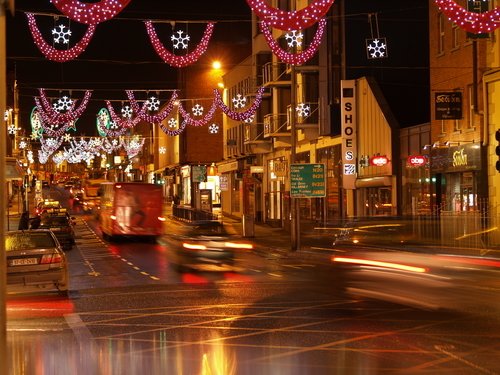

En la ciudad más antigua de Irlanda podrás encontrar edificios medievales, exuberantes y verdes praderas, magníficos castillos y una extraordinaria vida nocturna.
Limerick está situado en el río Shannon cerca de la pintoresca costa de Irlanda. Es la tercera ciudad más grande de Irlanda con 90.000 habitantes. Se caracteriza por poseer edificios históricos y un romántico castillo. Limerick es una ciudad de estudiantes con mucha vida y muy hospitalaria con varios pubs, bares y restaurantes. Hay varios museos y galerías de arte que muestran tanto arte irlandés como internacional. Limerick está situada en el corazón de la verde Irlanda y es ideal para hacer excursiones. Su capital, Dublín y Cork están a una distancia bastante cercana.Actividades de ocio y tiempo libre
En la parte antigua de la ciudad de Limerick, conocida como la ciudad irlandesa, se encuentran la mayoría de los edificios antiguos de la ciudad. La mayoría de las casas fueron edificadas en el siglo XVIII.
En el Hunt Museum, un viejo almacén del siglo XIX, han sido expuestas más de 2.000 obras de arte de conocidos artistas de los siglos XIX y XX. Por ejemplo, esculturas de Picaso o de Leonardo da Vinci. Hay más exposiciones contempóraneas, que se muestran en la galería de arte de Limerick.
Limerick dispone de una animada escena musical. Muchas salas de conciertos y pequeños pubs ofrecen a numerosos grupos irlandeses la oportunidad de tocar en directo.
El fin de semana se ofrece una excursión a la trepidante capital de la Isla, Dublín.También se llega rápido a Cork, la segunda ciudad más grande de Irlanda.
Te recomendamos que reserves tu vuelo a Shannon o Dublín. Hay un servicio de autobuses desde el aeropuerto de Dublín hasta Limerick (precio aproximdo 20 €—45 € Duración: 5 horas). Para conseguir información adicional puedes visitar la web www.buseireann.ie. El primer autobús de Dublín a Limerick sale a las 7:30 de la mañana y el último a las 20:00. El primer autobús de Limerick a Dublín sale a las 7:30 (y llega al aeropuerto de Dublín a las 11:10), el último sale a las 19:30 (llega al aeropuerto de Dublín a las 23:10). El servicio de transfer desde el aeropuerto de Shannon (solo ida) o la estación de tren o autobuses de Limerick hasta el alojamiento está incluido en el precio del curso.
1.Limerick - Inglés - Cursos de idiomas para adultos - Inglés - LISA ...
)))))))))))))))))))))))))))))))))))))))))))))))))) )))))))))))))))))))))))))))))))))))))))))))))))))) )))))))))))))))))))))))))))))))))))))))))))))))))) )))))))))))))))))))))))))))))))))))))))))))))))))) ))))
Limerick, el paseo más animado de Irlanda

Limerick es conocida internacionalmente por ser el lugar donde pasó la infancia el escritor Frank McCourt, nacido en Nueva York y autor del best-seller Las cenizas de Ángela. Hoy en día se puede decir que, a pesar de que no le hace falta situaciones externas para atraer turistas, gracias a la novela han venido hasta aquí numerosísimas personas.Limerick, el paseo más animado de Irlanda

La ciudad de Limerick tiene unos 91.000 habitantes y se encuentra en la zona más meridional del país. Vale la pena viajar hasta allí al menos un día, si no una estancia de un fin de semana. El centro de la ciudad se divide en tres secciones, conocidas como English Town, Irish Town y Newton Pery.
- English Town es donde se concentra la mayoría de los lugares turísticos de la ciudad.
- En Irish Town podemos encontrarnos con la gran belleza de sus calles.
- Y en Newton Pery nos quedaremos con la arquitectura georgiana.
Podemos comenzar nuestra visita en el Castillo del Rey Juan, una estructura fortificada del siglo X, justo cuando los vikingos comenzaron a llegar a la zona. De allí tenemos una fabulosa vista de la Catedral de Santa María, una catedral anglicana del siglo XII. Pero Limerick también tiene otra catedral, la de San Juan, catedral católica mucho más reciente. Construida en el siglo XIX, tiene la aguja más alta de Irlanda.
La ciudad también cuenta con el Museo Hunt, donde se expone la colección de la familia Hunt. Algunas de las piezas que se exponen son de la Edad de Piedra e incluso otras pertenecen al antiguo Egipto.
Otra de las grandes opciones que tenemos en Limerick es un paseo en barco, o bien un tour sobre los lugares más significativos del autor Frank McCourt. Nos acercamos ahora al Milk Market, construido a principios de 1800, un mercado interior que se puede visitar sobre todo los sábados. Durante el resto de la semana están abiertos los puestos que no venden productos de alimentación.
El Newton Pery es la zona del centro, y es donde podemos contemplar la arquitectura típicamente georgiana, edificios construidos en el siglo XIX.
Por otra parte, la vida nocturna aquí es muy activa, y ofrece un montón de lugares para pasar la noche. Desde los tradicionales pubs irlandeses a los bares más modernos. Además, teniendo en cuenta que Limerick es una ciudad universitaria, podéis estar seguro de que la noche y el ambiente suele estar muy animado.
(Por: Jose Manuel Vargas) (sobreirlanda.com)
)))))))))))))))))))))))))))))))))))))))))))))))))) )))))))))))))))))))))))))))))))))))))))))))))))))) )))))))))))))))))))))))))))))))))))))))))))))))))) )))))))))))))))))))))))))))))))))))))))))))))))))) ))))








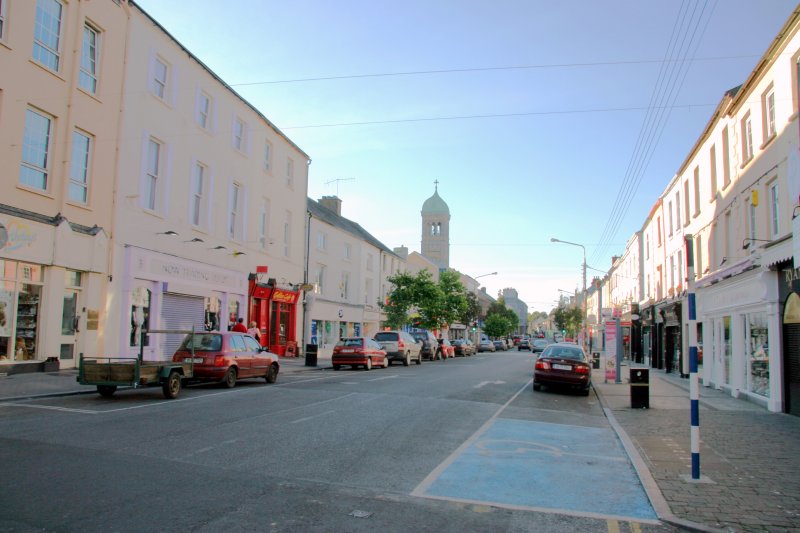






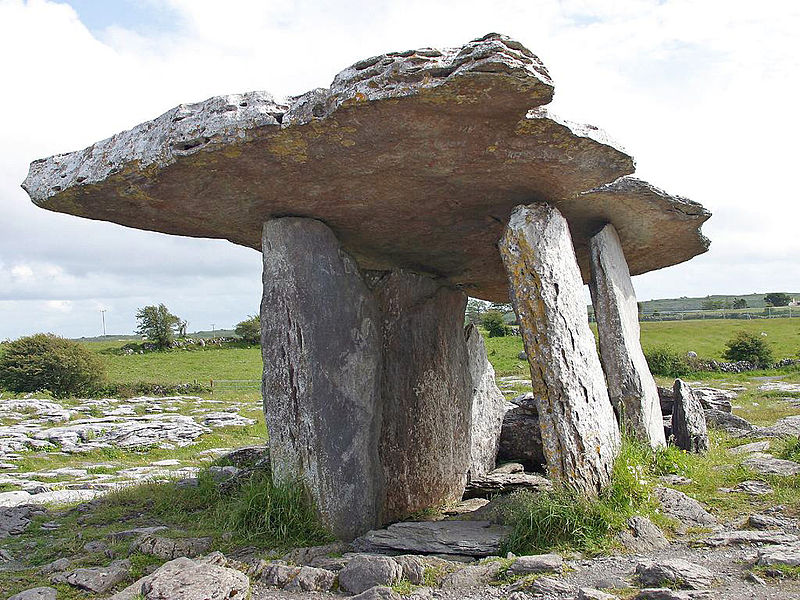












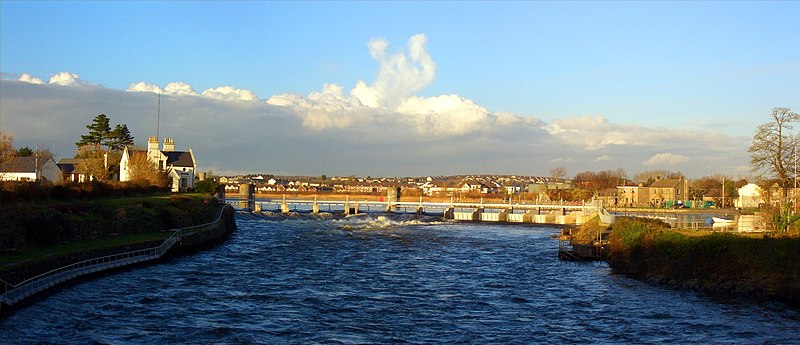





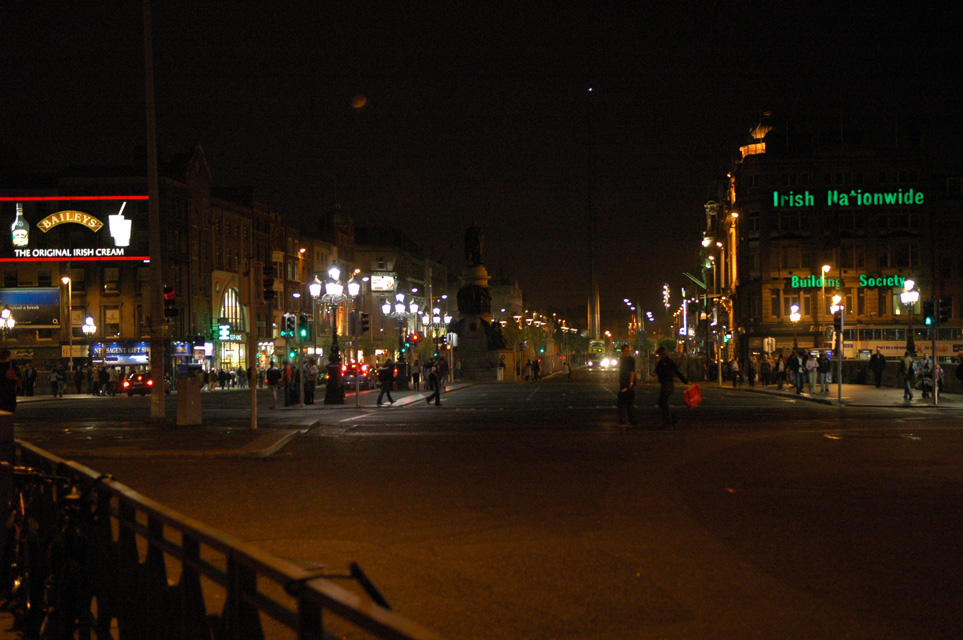







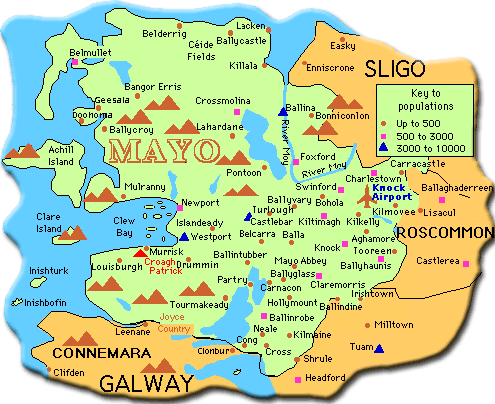






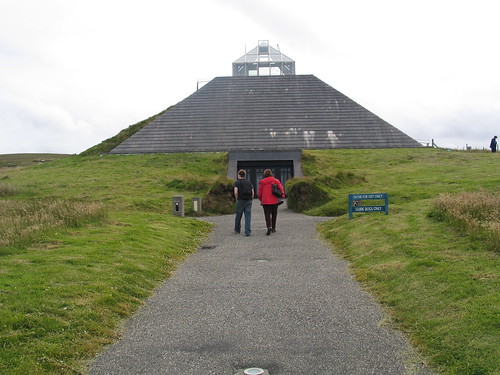




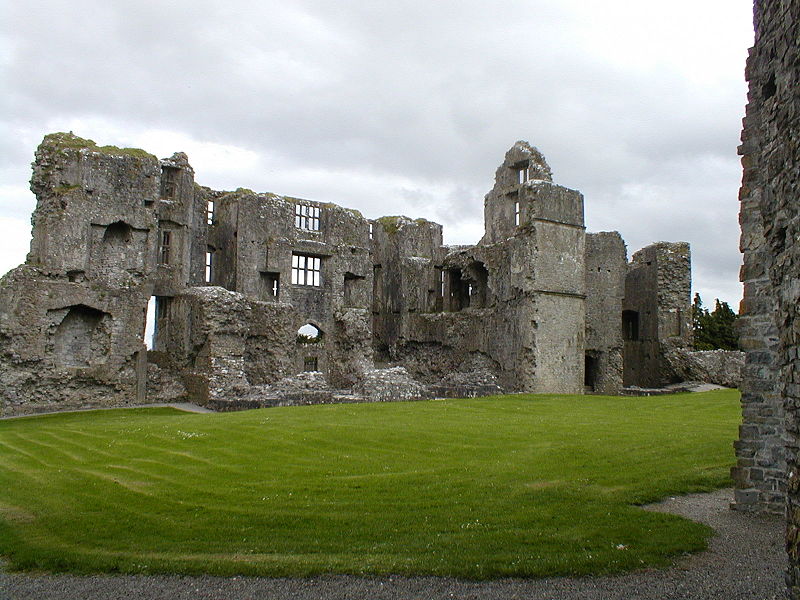





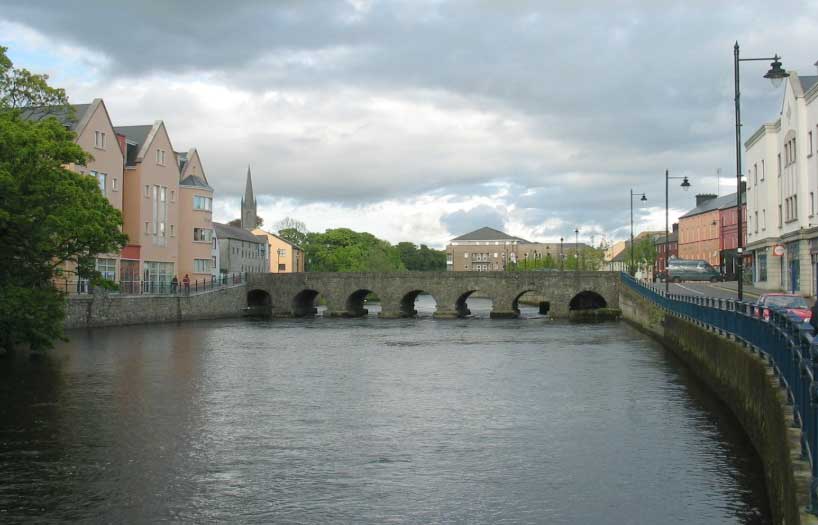




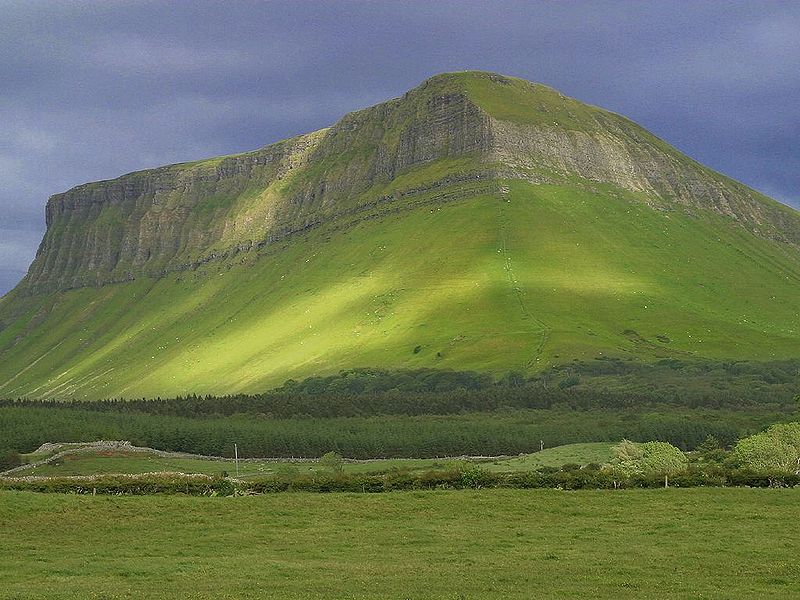















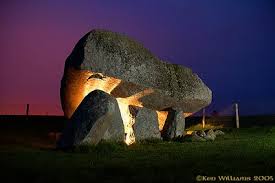










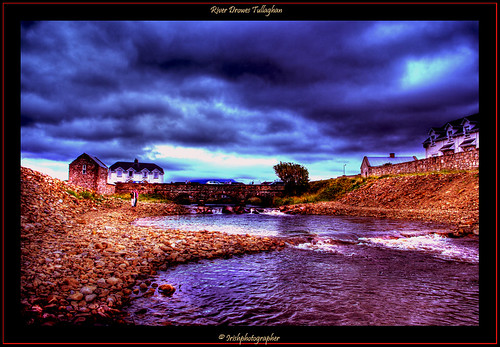








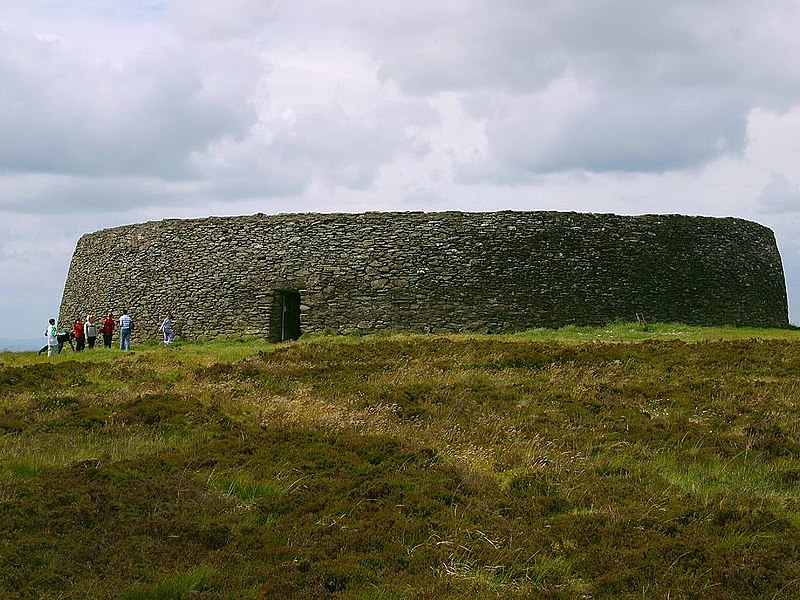
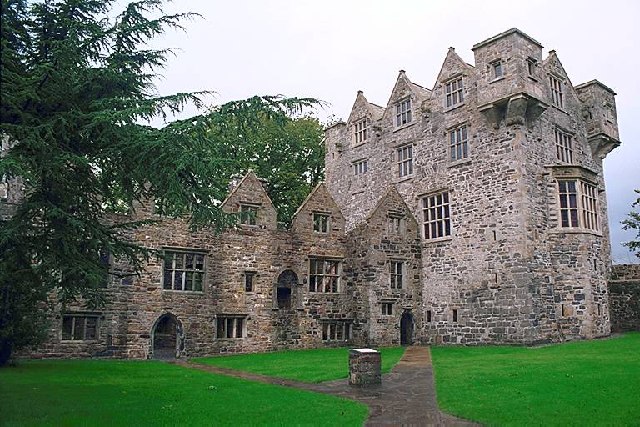




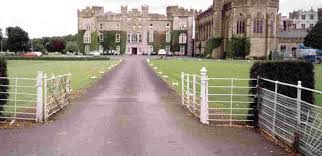


Comentario